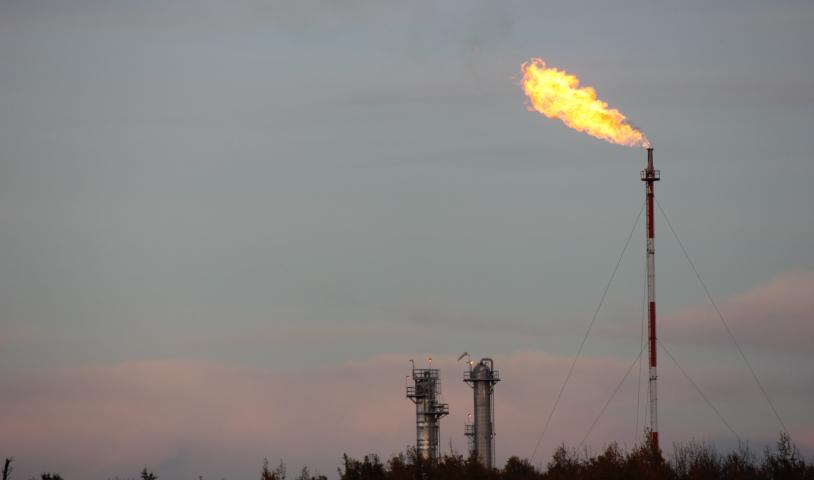The environmental science behind a run‑of‑river project
Thursday, July 12, 2012
Innergex opens up about its field work
The scientists had been expecting to see mountain goats but got wolverines instead.
Last winter, researchers brought in by Innergex Renewable Energy Inc. rigged four infrared cameras near the proposed site of the Upper Lillooet run-of-river power project because previously collected Ministry of Environment data said the area was mountain goat winter territory.
But no mountain goats tripped the shutters on the cameras — they had apparently moved on. Instead, surprisingly, the researchers got wolverine mugshots — images of the normally reclusive animals sniffing and even licking the cameras. The scientists wanted to know more.
It was decided to place bait high up tree trunks with barbed wire around it at different points in the region. The aim was to snag hair in order to carry out genetic analysis. This low-tech approach worked and the data is currently being assessed.
"There aren't (provincial) guidelines to follow the study of wolverines, and we were doing more than was necessary," said Innergex's project manager Natalie Closs.
The wolverine hair analysis will be added to the already compiled 7,000 pages of studies and analysis that is Innergex's environmental assessment application, carried out for submission to the British Columbian government for the Upper Lillooet Project.
The proposed IPP is made up of three plant sites along the river — the Upper Lillooet plant is roughly 70 kilometres north-west of Pemberton, and the Boulder Creek and the North Creek plants are 56 km and 38 km north-west of the village, respectively. The trio will produce 121MW. Innergex hopes to be operating a 40-year contract to sell energy to BC Hydro from them by 2016.
Added to the intakes and hydro-electric plant on the river is the need to build 72 km of power lines to move the electricity from the Upper Lillooet.
Independent power projects have been around for the last decade, gathering an ever-more complex amount of scientific data. While subjected to criticism by environmentalists and members of the public concerned by the impacts of the technology, especially on fish and river flows, nevertheless reams of information on flora, fauna, riparian areas and geology are gathered, often in areas and on topics where little existed before.
"The large value component of the project is really the environment component," Closs said.
Value component categories that need to be covered in the environmental assessment (EA) include environmental, heritage, health, social impact, and economic impact. These are areas considered important by any or all of the following: the proponent, government agencies involved in the EA process, the public, First Nations, and scientists.
Within these categories are lists of subsections. Visual integrity, part of social impact, is illustrated by the spectacular Keyhole Falls, a 23-metre punchbowl falls on the Lillooet River. It is downstream from the water intake for one plant but upstream from the powerhouse itself. Innergex provided photographs of the falls in its current state and how deep it is estimated to be afterwards, when water levels will drop with the plant in operation.
Many scientists, many fields
Closs, a civil engineer by training, started on the project in August 2008, engineers joined that October, wildlife biologists in 2009 and fisheries biologists in 2010.
Over the last four years, dozens of scientists have taken part — from the mammal and fish habitat specialists of the environmental assessment company Ecofish Research, to registered professional foresters, to engineers, to geomorphologists, to geological engineers, dozens in all.
The information gathering is still ongoing. The province requires one year of data for the application and two years' of data for the baseline assessment for the permanent project.
"We've just finished some spotted owl surveys and we're doing more in August, and we may go back and do some work on geomorphology this summer, we're finishing up the preliminary design, we have a few memos waiting on the wolverine study, and they're compiling their baseline report for aquatics with two years' of data," Closs said.
"It's winding down a little bit now. It's definitely quieter, but at the same time we are going through the environmental assessment process and we rely a lot on their knowledge and expertise and recommendations."
Does the mountain of data — the wolverine study and others like it — contain greater potential use than for the purposes of assessing the impact of the Upper Lillooet Independent Power Project? Or does it disappear into the bowels of government ministries never to be seen again? Is there greater value added from the information gathered in the process for wider society?
Any studies submitted as part of an IPP application become part of the government's records, to be used by ministry staff for the specific project as well as broader application to other government program areas as needed, a spokesman for the Ministry of Forest, Lands and Natural Resource Operations said in an email.
If outside agencies ask for the information it can be shared where possible within the parametres of B.C.'s Freedom of Information and Protection of Privacy legislation, he added.
After the submissions and decisions "all the information is placed on file as required by provincial regulations. Other ministries can access this information if they need to, however it's likely any agency involved in a project review would have received the info already," he said.
Data used by outside agencies
Innergex itself has shared data gathered in the course of creating the Upper Lillooet project application with other scientists and science students, Closs said. This would be considered on request, and applicants are subject to scrutiny for competitive reasons, but she said inquiries are welcome at the Innergex office in Pemberton.
Carie-Ann Lau, a 2012 graduate from Simon Fraser University's Earth Sciences program, was conducting a study into sediment levels in Lillooet Lake when the massive Capricorn Creek Slide occurred on August 6, 2010. Instead of working at the riverside, Lau found herself evacuating campers from the backed up Lillooet River after the second largest slide in Canadian history.
The experience, of course, changed her project. The uniqueness of scientific information following the slide was hampered by the sediment impacting Pemberton's river monitoring station far downstream.
The author of the main paper on the slide, Geohazards and Geomorphology scientist Rick Guthrie, recommended Lau spoke to Innergex.
"He mentioned that Natalie would be a really good person to talk to about water and hydrology of the area," she said.
"I called and I was welcome to have access to some of their water data to get a better understanding of how it all connected."
Lau said Innergex also shared core samples from the slide with students in earth sciences at the University of British Columbia, and took her and another student to the top of the slide at Capricorn Creek on Mount Meager by helicopter.
"Otherwise it would have been a two-day hike," Lau said. "Their help made our research a lot easier and a lot less expensive. Usually these things are covered by research grants, which are usually very sparse, especially these days."
Access to rare information is important to other agencies, too. Upper Lillooet data has been used to benefit the Sea to Sky trail project, said Closs, as well as local government.
Gwen Barlee, policy director of the Wilderness Committee, has criticized IPPs over the years and earlier this year used a freedom of information request to access alarming river flow drops on some projects. She expressed skepticism at the value of the science gathered.
"The problem is that you have an emasculated ministry of environment, you have a federal government that has slashed and burned any remaining environmental regulations. We're supposed to trust the companies. They do these studies and reports and I have some concerns about how independent these reports are, especially if they found something the company doesn't like," Barlee said.
To address critics and answer questions, Closs would like to see members of the public attend Innergex's upcoming open house on the Upper Lillooet run-of-river project. It takes place in the Pemberton community centre on July 10, from 4 to 8 p.m.
Photo: Rivers like the Mamquam have already faced development from private power producers like Innergex. Image by Kevin Teague (Flickr)





